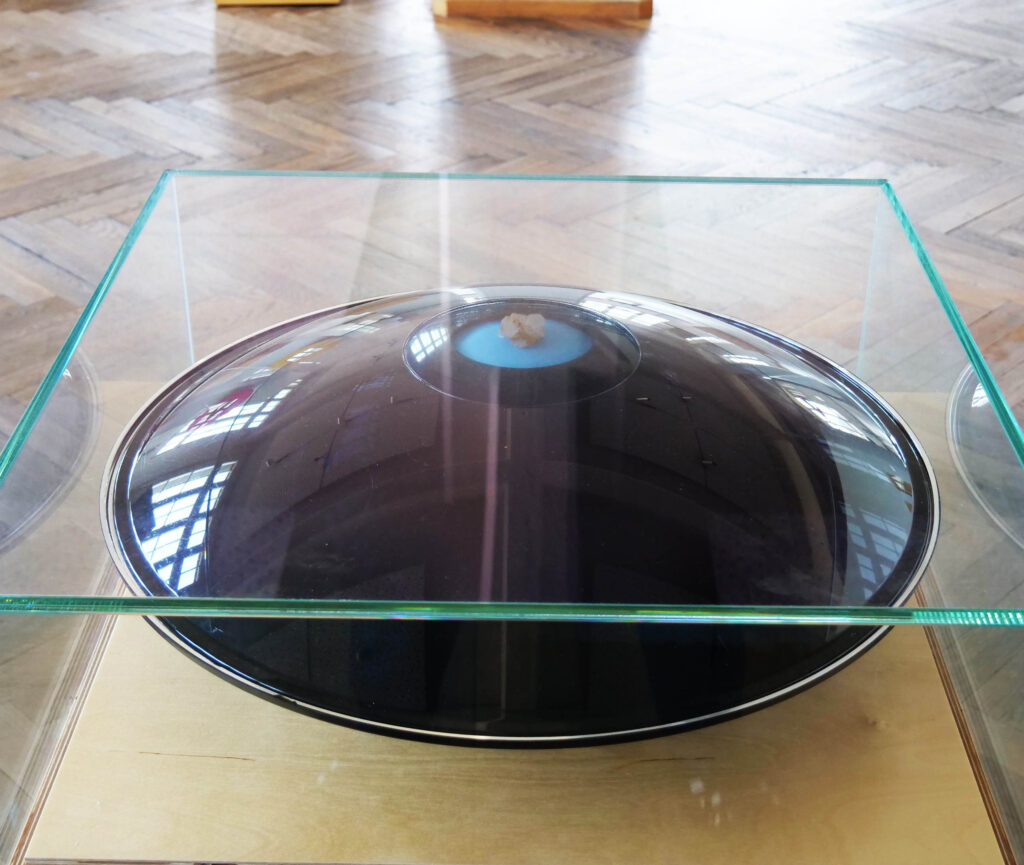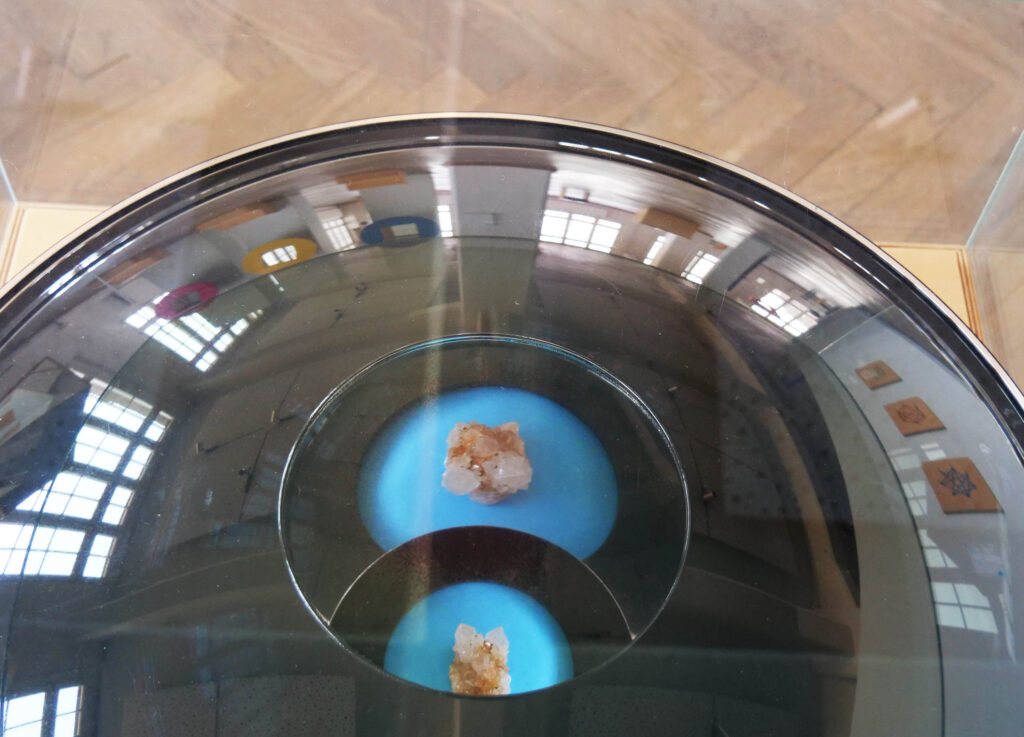Mirage
The “Mirage” exhibit shows an interesting optical illusion: a crystal lies in front of an observer as if on a platter. But if you reach for it, you simply — reach into the void. How is that possible? In the following text we will go into a little more detail about the mathematical background behind this illusion.
The exhibit uses two parabolic mirrors to create the strange effect. Such mirrors are also used, for example, in reflecting telescopes and in satellite communication.



![Rendered by QuickLaTeX.com \[F=\mathbf{s}_x'(t_0)=\begin{pmatrix} 0\\ x^2+\frac{1}{1+4x^2}\cdot\frac{1+4x^2}{4}(1-4x^2)\end{pmatrix}=\begin{pmatrix} 0\\ 1/4\end{pmatrix}.\]](https://erlebnisland-mathematik.de/wp-content/ql-cache/quicklatex.com-821ee02c3fcfab55db24be52ba097e59_l3.png)
![Rendered by QuickLaTeX.com \[\mathbf{x}(\varphi)=\begin{pmatrix} R_0\cos(\varphi)\\ R_0\sin(\varphi)\\ d/2\end{pmatrix}\]](https://erlebnisland-mathematik.de/wp-content/ql-cache/quicklatex.com-07d263e776509bab821780e0718cd1e4_l3.png)
![Rendered by QuickLaTeX.com \[F_1=\begin{pmatrix} 0\\ 0\\ 1/4\end{pmatrix}\]](https://erlebnisland-mathematik.de/wp-content/ql-cache/quicklatex.com-7fbb25dcd49cbf8de0908dec2d777d45_l3.png)
![Rendered by QuickLaTeX.com \[F_2=\begin{pmatrix} 0\\ 0\\ d-1/4\end{pmatrix}\]](https://erlebnisland-mathematik.de/wp-content/ql-cache/quicklatex.com-850ad90f8b08a7fc1b89ef4017b3b371_l3.png)
![Rendered by QuickLaTeX.com \[\mathbf{s}(t)=\begin{pmatrix} 0\\ 0\\ 1/4\end{pmatrix}+t\begin{pmatrix} \cos(\varphi)\\ \sin(\varphi)\\ a\end{pmatrix}.\]](https://erlebnisland-mathematik.de/wp-content/ql-cache/quicklatex.com-13a774cc93b0d6ffa7342c8bfb4c7539_l3.png)
![Rendered by QuickLaTeX.com \[\mathbf{s}(t)=\begin{pmatrix} 0\\ 0\end{pmatrix}+t\begin{pmatrix} \cos(\varphi)\\ \sin(\varphi)\\ a\end{pmatrix}\]](https://erlebnisland-mathematik.de/wp-content/ql-cache/quicklatex.com-380c8a470093e1b7836cbdd8d142904f_l3.png)
